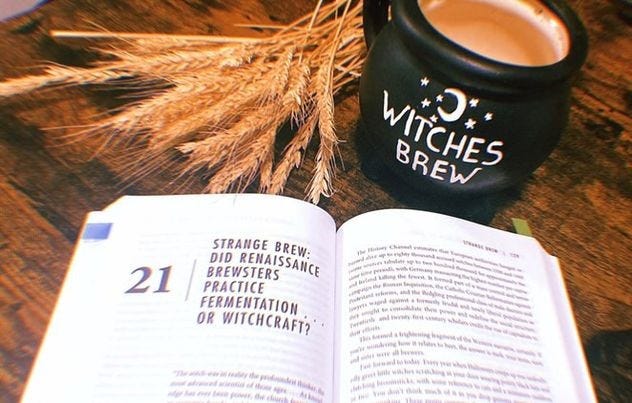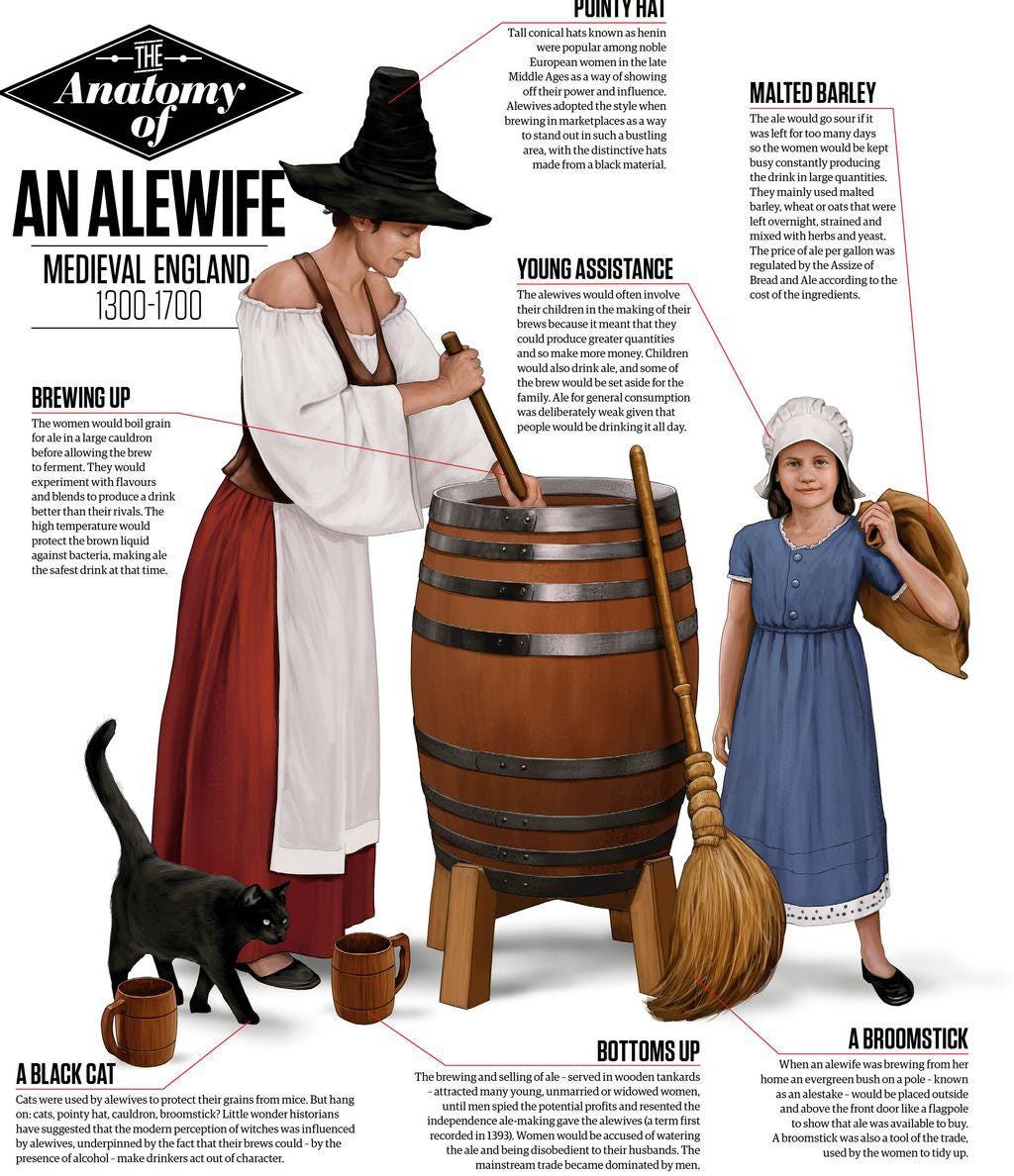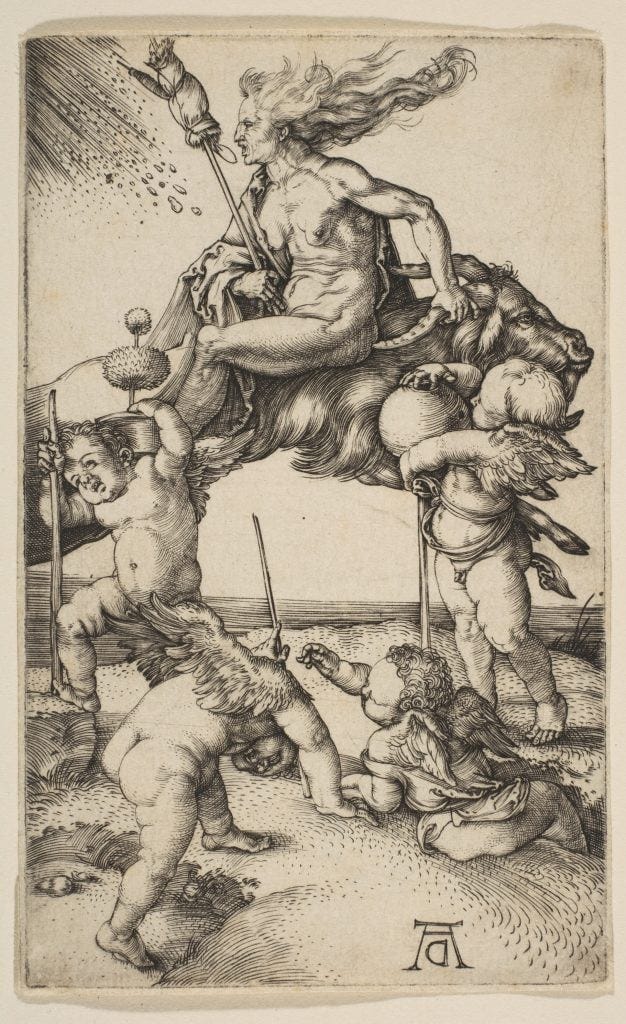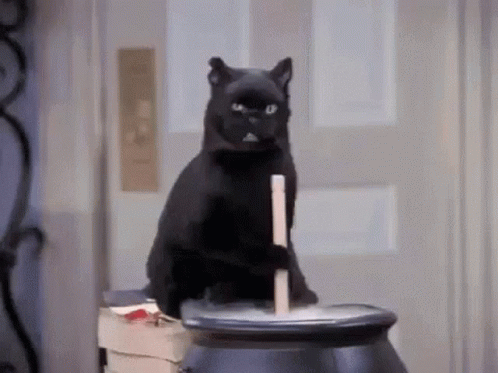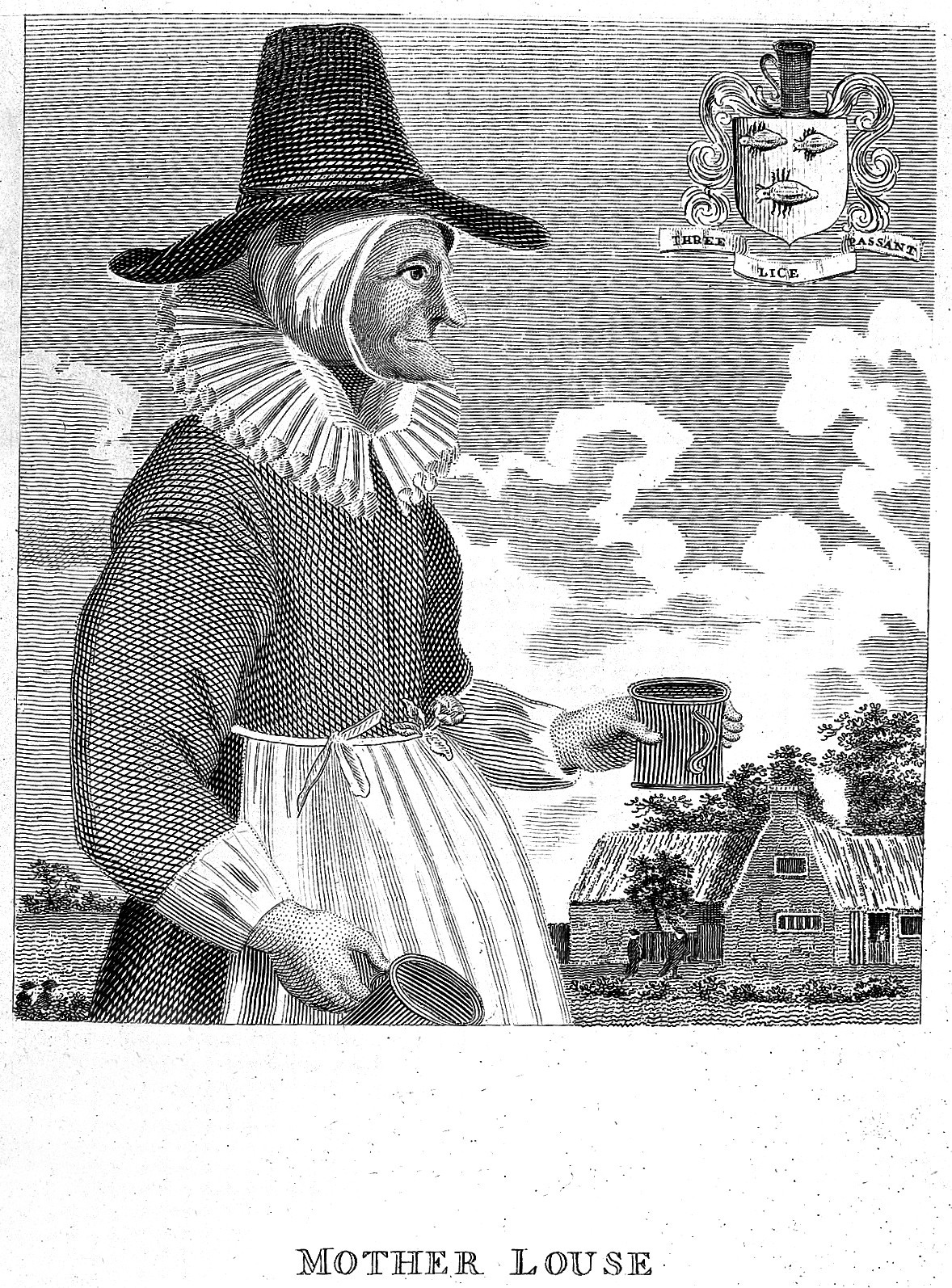The Myth of the Alewives: Debunking Witch Stereotypes.
Did a genuine connection ever exist between women involved in brewing and the practice of witchcraft, and how did this narrative originate?
Lately, there has been a growing trend of linking portrayals of Medieval1 with our contemporary conception of witches, encompassing elements like pointed hats, cauldrons, black cats, and broomsticks. This narrative has circulated among amateur historians who discuss it casually, asserting that the modern imagery of witches draws from these Medieval alewives. Over time, these accounts have evolved into commonly embraced historical narratives.
But, is there any validity to these assertions? Did female brewers ever have a connection to witchcraft, and what is the origin of this narrative?
As is common, these narratives have evolved into widely accepted popular history. However, is there any validity to these claims?
Not long ago, the History Channel released a video suggesting a curious connection between our contemporary witch depictions in popular culture and the traditional attire and tools of alewives. According to their narrative, this intriguing link originated during the 16th century, encompassing elements like the iconic pointed hat and the presence of black feline companions, all supposedly inspired by brewsters.2
Interestingly, numerous blog posts and news articles have emerged, asserting that our modern witch imagery can be traced back to medieval alewives, who existed before the 16th century, but there's a significant issue with these arguments—they lack historical accuracy entirely.
A brief introduction:
Witches have long been an iconic part of Halloween culture, and their portrayal in modern Western society often includes black hats, broomsticks, and feline companions. Recently, there have been claims that these depictions are rooted in the dress and culture of medieval or 16th-century ales.
3
Pointy Hat:
One argument suggesting that alewives inspired the witch stereotype revolves around the pointy black hat. It's said that alewives wore tall hats to gain attention at markets, leading to the portrayal of witches in similar attire. However, this claim is historically inaccurate. Pointy-hat-clad witches did not appear until the 18th century, long after the time of alewives. Prior to this, witches were depicted as ordinary people, often naked or wearing historically accurate clothing.
The origin of the pointy hat remains unclear, with several theories proposed. It may have been influenced by 4, medieval hennins, classical depictions of the goddess Diana, or even 5. The association between witches and pointy hats emerged much later than the medieval or 16th-century alewives.

Brooms:
Another claim suggests that witches riding broomsticks were inspired by alewives' alestake, a pole with a garland signaling ale for sale. However, witches were depicted riding various objects, not just brooms. They were also shown riding animals or even flying without instruments. Historical records reveal that witches used sticks, staffs, and other objects for transportation.
The idea of witches flying was denounced in medieval thought as a hallucination induced by the devil. The broomstick's association with witches might reflect the preponderance of female witches, as it was a symbol readily available in their daily lives.
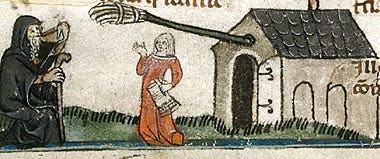
Cats:
Cats are often associated with witches, but claims that this connection stems from medieval heretical practices and alewives keeping cats to catch mice are not entirely accurate. While cats were occasionally 6, they were not strongly associated with witchcraft until the Early Modern period.
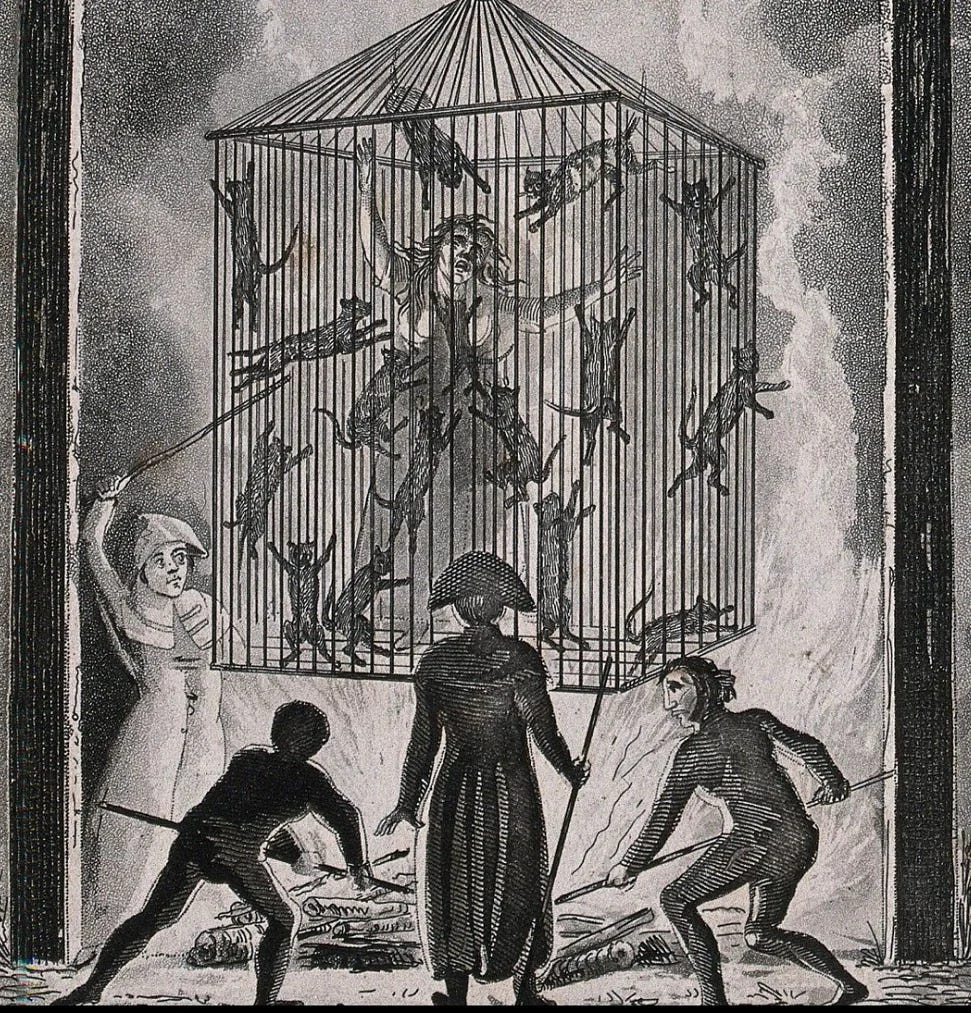
Familiars, commonly associated with witches, were unique to England and often just the pets of the accused. The belief that witches could transform into various animals, including cats, was more prevalent in continental Europe.
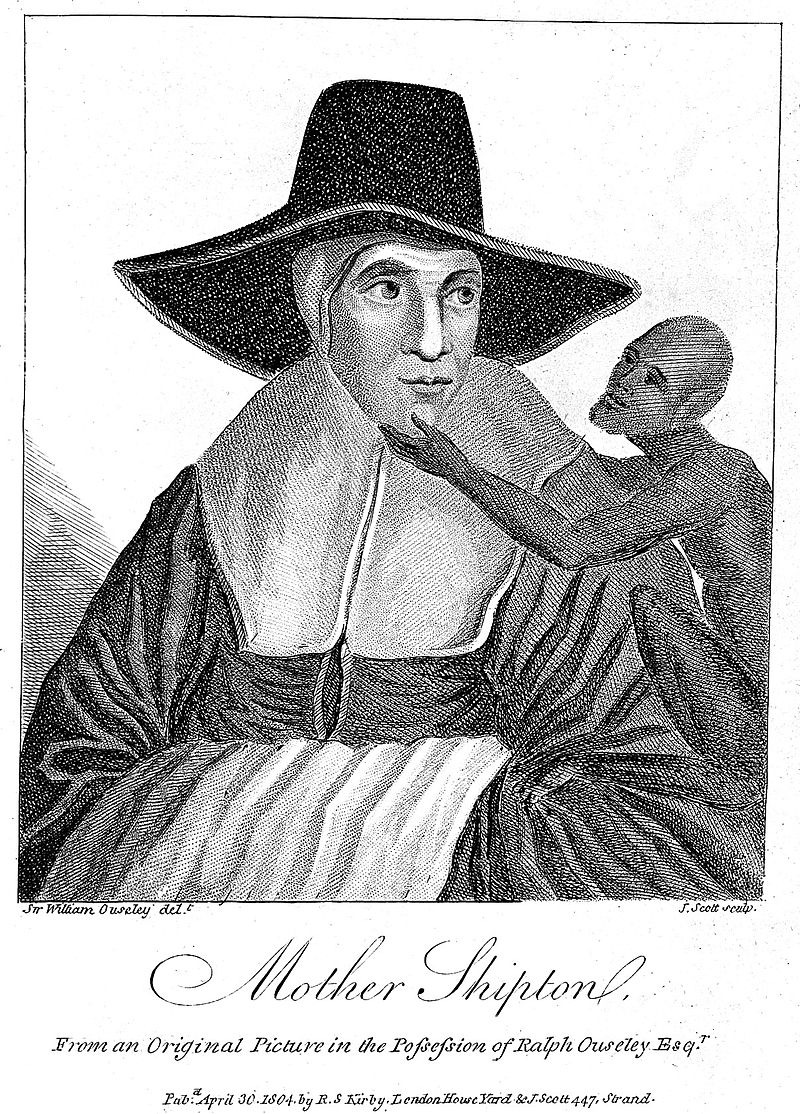
Cats' association with witches in the Early Modern period was based on deep-seated beliefs in their connection to the occult and demonic forces, not their role in alewives' households.
The idea that medieval or 16th-century alewives were responsible for the modern witch stereotype is a myth. Pointy hats, broomsticks, and cats became associated with witches through complex historical processes that had little to do with alewives. It's essential to critically evaluate historical claims and be cautious about accepting popular narratives without conducting thorough research. Take it with a grain of salt, but dig deeper because history can be a lot more fascinating and complex than we give it credit for.
✶
The association between Brewsters women (also known as Alewives ) and the modern witch archetype may be a result of several factors, but it's important to note that this association is not historically accurate and is based on misconceptions and stereotypes.
The image of a witch, as popularized in modern media and folklore, often draws upon various cultural stereotypes and fears. These stereotypes may have been projected onto women who were perceived as different or unconventional in their communities. Alewives, who brewed and sold beer, were often seen as independent business women, which could have contributed to their being labeled as "witches" in certain contexts.
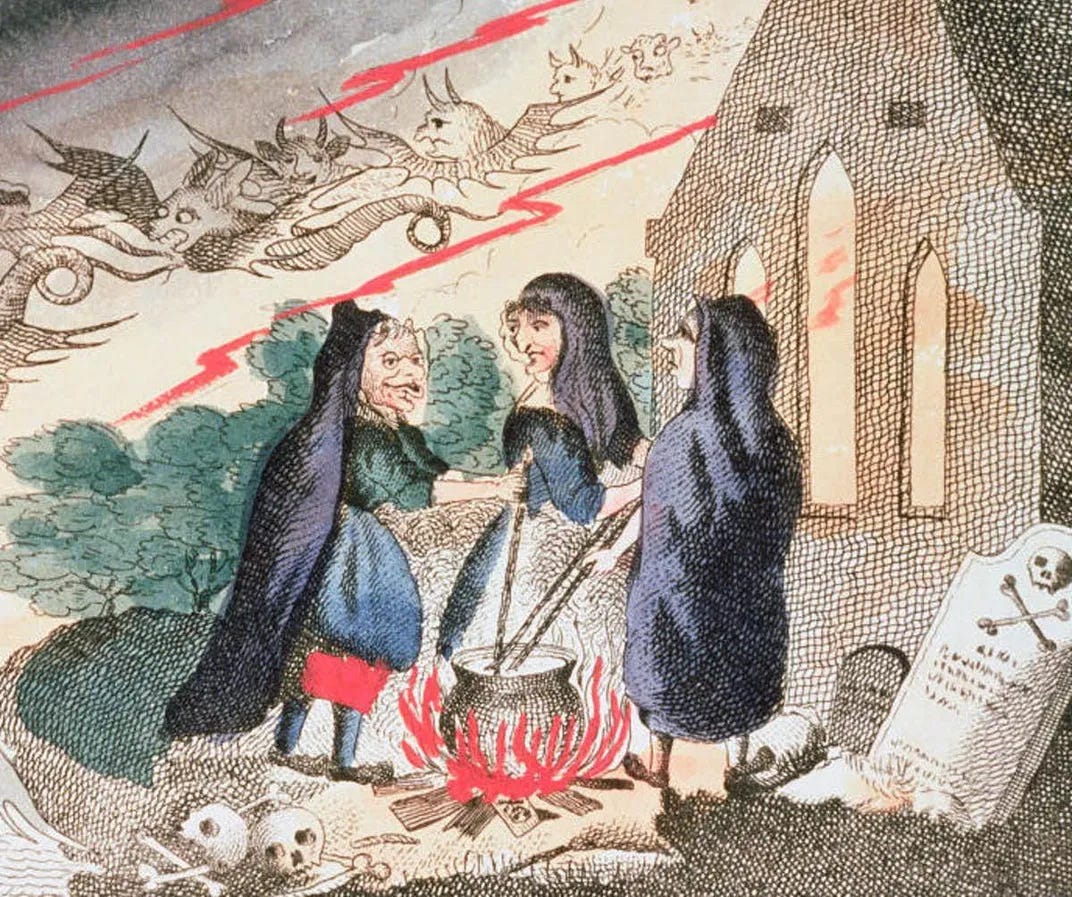
Misunderstanding of Herbal Knowledge: Alewives, like many women of their time, had knowledge of herbal remedies and medicinal plants. This knowledge could have been misunderstood or misrepresented as witchcraft, especially when their herbal practices were perceived as unconventional or outside the bounds of accepted medical practices.
For many thousands of years, a mostly illiterate European populace attributed the process of fermentation to mystical forces, believing that some inexplicable and otherworldly power was responsible for the transformation of their food and drink.
The witch hunts and trials of the Early Modern period in Europe (16th to 18th centuries) were marked by widespread fear and superstition. During this time, many women were accused of witchcraft based on flimsy evidence, personal vendettas, or mere suspicion.

In some cases, the association between alewives and witches may be a retroactive attempt to explain or rationalize the persecution of women in history. By labeling these women as "witches," it may serve as a way to critique the unjust treatment they received and draw attention to gender-based oppression and violence.
It's essential to recognize that the modern witch archetype is a complex and multifaceted cultural construct that draws from various historical, literary, and folkloric sources. The association between alewives and witches is just one small part of this broader cultural narrative, and it should not be taken as an accurate representation of the historical roles and identities of alewives.
In reality, alewives were primarily businesswomen involved in brewing and selling beer, and the witch hunts of the Early Modern period were driven by superstition, misogyny, and social factors unrelated to their actual practices.

Alewives and Witchcraft*: The Overlapping Struggles of Early Modern Women
During the Early Modern period in England, several interconnected factors led to significant challenges for women. A rapid population increase, a female majority in the population, and diminishing economic opportunities for women contributed to the feminization of poverty7. In this context, the status of female brewers, known as alewives, reflects the economic struggles faced by women. The increasing masculinization of the brewing trade disrupted the financial balance between spouses and particularly impacted unmarried women. This economic shift had significant consequences, including the targeting of women with witchcraft accusations.
The brewing trade was one of the economic activities dominated by women in the Early Modern period. However, as this trade became more masculinized, women, especially unmarried ones, found it increasingly challenging to compete. This disruption in their economic position threatened the existing gender balance and male dominance in the brewing industry. As a result, some men resorted to spreading rumors and false accusations to drive women out of the brewing business.
Historical records provide examples of how false accusations were used to destroy the livelihoods of female brewers. In 1413, 8. Similarly, in 1641, an unnamed widow who brewed at Ludlow castle garrison lost her entire trade when a male competitor spread false rumors about her and her business.
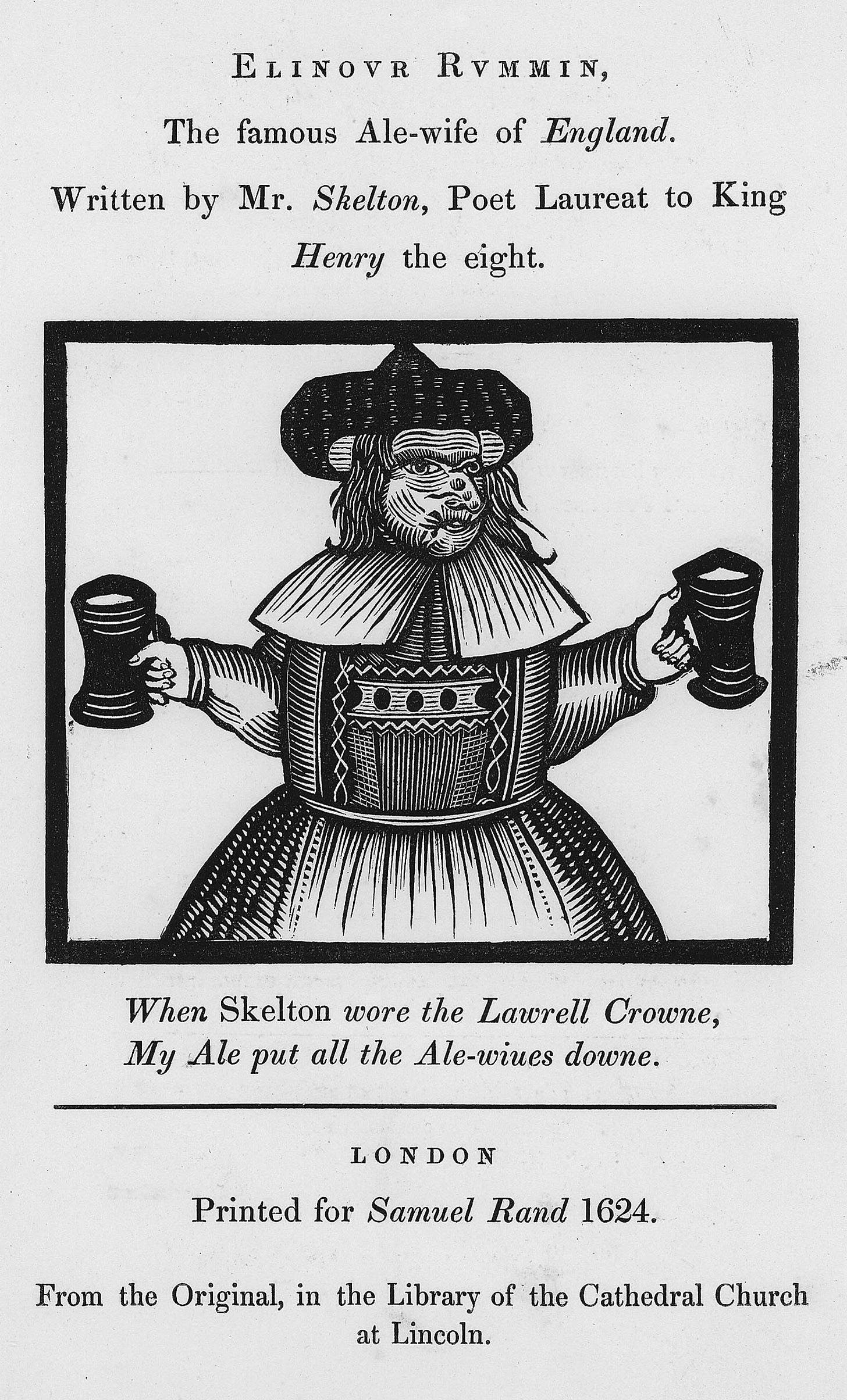
Social Control Through Accusations:
While the extent of this phenomenon requires further research, it is evident that accusations of witchcraft were used as a means of social control. The witchcraft accusations against women, such as Anne Pedersen9, show parallels with the accusations faced by alewives. It is reasonable to speculate that accusations of witchcraft were also deployed as a means of controlling poor alewives in England, albeit with potentially fatal consequences.
Alewives were particularly vulnerable to witch-hunts due to their economic struggles and social circumstances. They often belonged to the economically disadvantaged strata of society, including widows and single women, who lacked the social and economic resources needed to defend against false accusations.
While we may never have definitive proof that alewives were accused of witchcraft solely because of their profession, there is a compelling overlap between alewives and women accused of witchcraft during the late medieval and Early Modern periods.
The economic disruptions caused by the masculinization of the brewing trade made women in this profession susceptible to false accusations and contributed to their vulnerability during a period marked by fervent witch-hunting. This historical context underscores the intertwined struggles of early modern women as they navigated economic challenges and social prejudices.
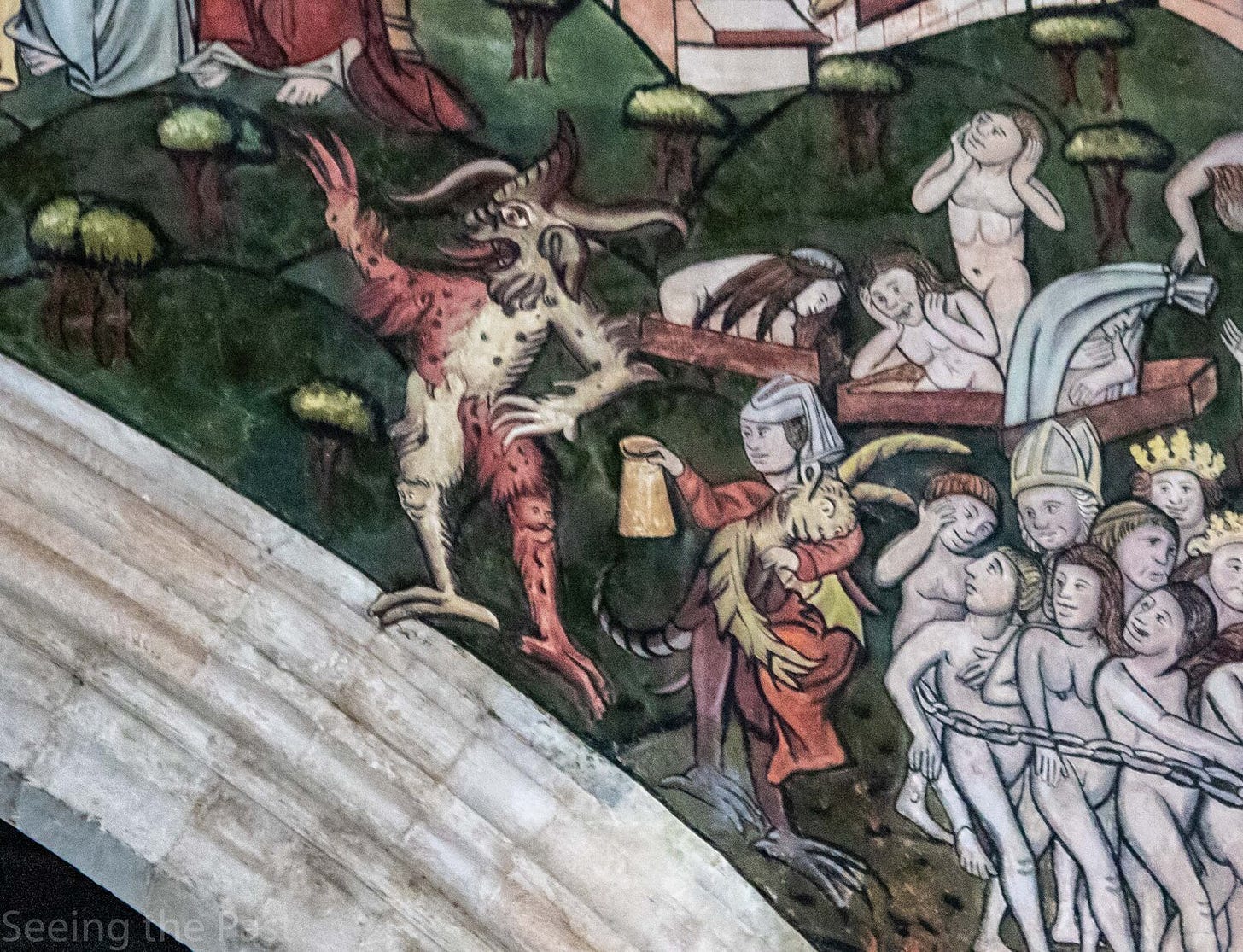
Throughout history, an unsettling pattern emerges regardless of the origins of the myth in question. It's a pattern where the valuable domestic work carried out by women often faced devaluation and erasure. Men tended to step into the spotlight and dominate the very industries that were built upon these skills, particularly those related to the essential art of cooking.
In the realm of historical reflection, the unsettling recurrence of undervaluing and marginalizing women's contributions serves as a haunting testament to the profound and enduring gender disparities that have plagued our societies. This repetitive pattern, one that has endured through the ages, serving as a stark reminder of the pervasive injustice that has cast its shadow for generations.
It is crucial to recognize that the time has come to dispel the enchantment that sustains this inequality. We stand at a crossroads, with the opportunity and the responsibility to shatter this longstanding spell and usher in a more equitable future.
✶
In the Middle Ages, alewives and brewsters played crucial roles in the production and distribution of ale and beer, which were staple beverages of the time.
What’s a brewster? No, you’re wrong … Or at least you’re not as right as you think you are. I, too, used to believe that “brewster” meant, exclusively, a female brewer
A dunce cap, also known as a dunce hat or a fool's cap, is a conical hat that was historically used as a symbol of ridicule or punishment in educational settings. It typically consists of a tall, pointed cap, often made of paper or cardboard, with the word "dunce" or other derogatory terms written on it.
The dunce cap was historically placed on the head of a student who was deemed to be slow, unskilled, or unintelligent in their studies. It was intended to shame or embarrass the student as a form of punishment for their perceived lack of academic ability. The practice of using dunce caps as a form of punishment has largely fallen out of favor in modern education, as it is considered demeaning and counterproductive to a student's learning experience.
Why do witches wear pointed hats? Or have big noses? Or eat children? The answers, it may surprise us to learn, can be found in the history of antisemitism.
In the 13th century, Pope Gregory IX declared that cats were instruments of the Devil, which led to a feline purge across the entire continent. Many cats were burned to death for public entertainment, especially black cats. 💔
The "feminization of poverty" is a concept that refers to the disproportionate representation of women among the world's poor. It highlights the phenomenon where a higher percentage of individuals living in poverty are female. This term underscores the intersection of gender and poverty, emphasizing that women, in many societies, are more likely to experience economic hardship compared to men.
Judith Bennett, Ale, Beer and Brewsters in England: Women’s Work in a Changing World. 1300-1600, (Oxford University Press, 1996), p. 135.
Anne Pedersdotter, was a historical figure associated with the witch trials that occurred in Norway during the 17th century. She is particularly famous for her involvement in the dramatic witch trial known as the "Vardø witch trials," which took place in Vardø, Finnmark, Norway, in the early 17th century.
Women in the 1600: “I think…”
Church :
And just for the record, I love witches.





